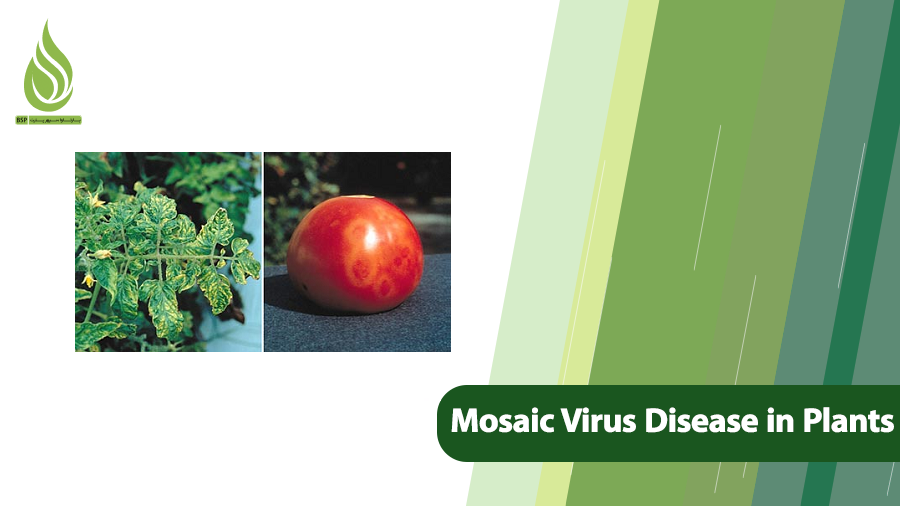
How to Control Mosaic Virus Disease in Plants Through Proper Nutrition
Mosaic virus disease is one of the most common challenges in agriculture, significantly impacting crop yields and product quality. Symptoms often include alternating green and yellow stripes on leaves, wilting, and stunted growth. Fortunately, with the right plant nutrition strategies, you can largely prevent this virus from taking hold. In this article, we’ll explore the factors that contribute to the spread of mosaic viruses in plants. We’ll also dive into the principles of proper nutrition to avoid this issue altogether.
What Is Mosaic Virus Disease?
Mosaic virus disease ranks among the most critical and widespread viral infections affecting field crops and vegetables. It can drastically reduce both the quantity and quality of harvests. This virus affects a broad range of plants, including vegetables like tomatoes, cucumbers, peppers, squash, lettuce, and spinach. Field crops such as tobacco, corn, soybeans, and beans are also vulnerable.
Once the virus spreads, managing its effects becomes extremely difficult. There’s no definitive cure for mosaic virus in plants, so prevention through methods like optimal nutrition is essential. For instance, viruses like Tobacco Mosaic Virus (TMV) and Cucumber Mosaic Virus (CMV) are notorious for their persistence and ability to overwinter in plant debris or weeds, making early intervention crucial.
Mosaic viruses belong to a family of pathogens that hijack plant cells to replicate. They disrupt normal cellular functions, leading to visible deformities and reduced photosynthesis. Globally, these viruses cause billions in agricultural losses annually, particularly in regions with intensive vegetable farming. According to the University of California Integrated Pest Management (UC IPM), mosaic viruses are especially problematic in home gardens and commercial fields where sanitation practices are lax. To combat this, understanding the virus’s biology is key, it’s not a single entity but a group, including TMV, which was one of the first viruses ever discovered in the late 19th century, and CMV, which has over 1,200 host species.
Introducing Mosaic Virus Disease
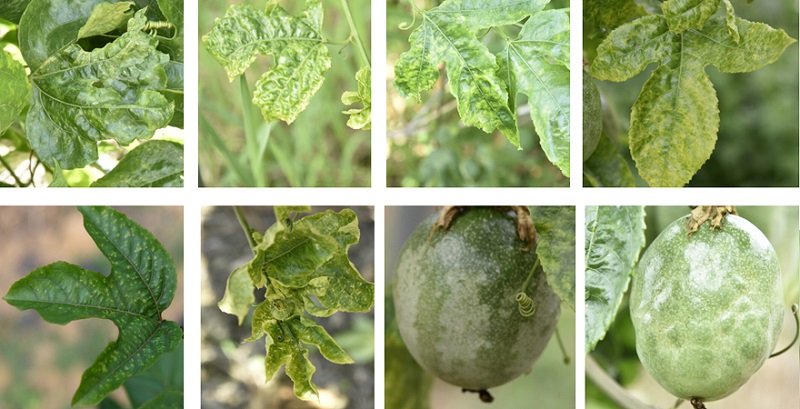
Visible Symptoms of Mosaic Virus
The signs of infection can vary slightly depending on the specific virus strain and the host plant, but the core symptoms of mosaic virus in plants include:
- Bright green and dark green spots on leaves forming a mosaic pattern (this should be compared to common leaf diseases in plants for accurate diagnosis).
- Curling and malformation of leaves.
- Shortened internodes and irregular plant growth.
- Small, discolored, or deformed fruits.
- Significant reductions in yield and product quality.
Early detection of these symptoms is vital for preventing the virus from spreading and preserving plant health. For example, in tomatoes, TMV often causes mottled leaves with a “shoestring” appearance, where leaves become narrow and fern-like. In cucumbers, CMV might lead to yellow mottling and stunted vines, reducing fruit production by up to 50% in severe cases. Other subtle signs include vein clearing, where leaf veins turn pale, or ringspots on fruits, which make them unmarketable.
Gardeners should regularly inspect plants, especially young ones, as symptoms are more pronounced in new growth. Using tools like magnifying glasses can help spot early mosaic patterns before they spread. Research from Cornell University highlights that mixed infections, where a plant has two viruses, can exacerbate symptoms, such as dark streaks and severe curling in tomatoes.
Symptoms of Mosaic Virus
Bright and dark green spots on leaves in a mosaic pattern are clear indicators that this virus has infiltrated your field or garden. These patterns disrupt chlorophyll distribution, weakening the plant’s ability to photosynthesize effectively.
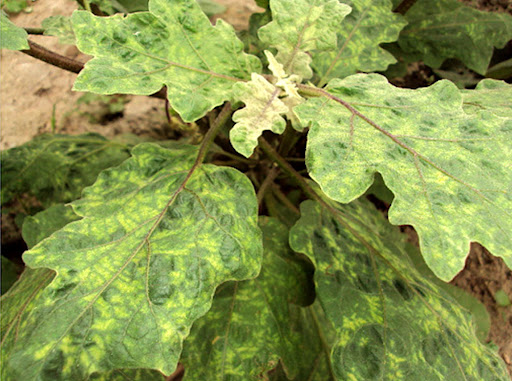
How Does the Virus Spread?
Mosaic viruses replicate within living plant cells. They penetrate plant cells and use them for reproduction and expansion. Mosaic viruses can spread in several ways:
- Infected seeds: Some strains, like Cucumber Mosaic Virus (CMV), transmit through seeds.
- Direct contact: Viruses can spread via physical contact between plants, such as during pruning, harvesting, or any farming activity that brings plants close together.
- Contaminated tools: Agricultural tools like scissors, shovels, and other equipment that have touched infected plants can transfer the virus to healthy ones.
- Vector pests: Sucking insects like aphids, whiteflies, and leafhoppers are primary carriers of mosaic viruses. These pests feed on the sap of infected plants and then transmit the virus to healthy ones.
- Nearby infected plants: Weeds harboring the virus serve as a major source for spread.
- Water: Irrigation with contaminated water can aid in virus dissemination across fields.
- Soil: Certain viruses can survive in soil and infect new plants through their roots.
Preventing the spread of viral diseases in plants requires knowledge of transmission methods and implementing appropriate control measures. By maintaining farm hygiene and boosting plant resistance to pests, you can curb the expansion of various mosaic viruses. Aphids alone are responsible for transmitting over 50% of plant viruses, including CMV, making insect management a top priority. Mechanical transmission via wounds from tools or even human hands is common with TMV, which is highly stable and can survive on surfaces for months. In greenhouses, poor ventilation can exacerbate spread by encouraging pest populations.
To minimize risks, rotate crops annually and avoid planting susceptible species in contaminated soil. Studies from the South Dakota State University Extension emphasize isolating fields and removing weeds to break the transmission cycle.
Controlling Mosaic Virus Disease with Proper Plant Nutrition
Statistics show that pests and diseases destroy a high percentage of agricultural products. Overuse of pesticides leads to resistance in plants and harms human health and the environment. Proper and timely use of nutrients offers a sustainable way to enhance plant resistance to viruses and pests. Essentially, we focus on prevention rather than cure.
Adequate nutrition strengthens the plant’s immune system, increasing its resistance to diseases. Nutrients help plants cope with environmental stresses. Plants require a wide array of nutrients; meeting these needs reduces the risk of viral infections.
Balanced nutrition fortifies cell structures, boosts defensive compound production, and lowers disease susceptibility. Conversely, improper nutrition or excessive use of one element creates favorable conditions for virus progression. For lettuce, nutrition management with balanced fertilizers has been shown to reduce mosaic virus severity by improving overall plant vigor.
Proper plant nutrition is a key factor in controlling mosaic virus disease. By providing the right nutrients and employing effective nutrition strategies, you can enhance plant health and minimize infection risks. Recent nanotechnology research demonstrates that calcium nanoagents can rescue tomatoes from mosaic virus by improving calcium delivery to young tissues, reducing symptoms by up to 80%.
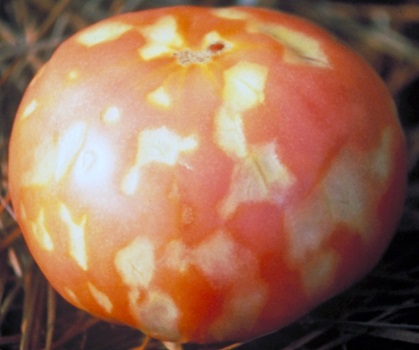
Essential Nutrients for Boosting Plant Resistance
Key nutrients for mitigating mosaic virus damage include:
- Potassium: Potassium strengthens cell walls, improves metabolism, and increases defensive compound production. Research indicates that plants with sufficient potassium exhibit much milder mosaic virus symptoms. In wheat, potassium fertilization has been linked to lower yellow mosaic virus incidence by enhancing root health.
- Calcium: Calcium bolsters cell walls and can reduce disease-induced damage. Adequate calcium improves fruit and vegetable quality while preventing infections. In tomatoes, calcium deficiencies exacerbate mosaic symptoms, but foliar applications can mitigate this.
- Nitrogen: Nitrogen is one of the most widely used fertilizers in agriculture. Sufficient nitrogen promotes growth and reproduction, strengthening the immune system. However, it must be applied according to plant needs. Excessive nitrogen softens plant tissues, making them more prone to virus replication. Deficiency weakens plants and reduces resistance. Thus, applying recommended amounts in stages is best. Over-fertilization with nitrogen can increase aphid populations, indirectly aiding virus spread.
- Micronutrients (including zinc, manganese, iron): Micronutrients, especially zinc, manganese, and iron, play crucial roles in enzyme activity and plant immunity. Zinc and manganese boost antioxidant enzyme production, heightening resistance. In squash, zinc applications have reduced watermelon mosaic virus effects by 30-40%.
Other nutrients like silicon can form physical barriers in cell walls, deterring aphid feeding and virus entry. Boron aids in cell division and can indirectly support resistance.
Additional Recommendations for Controlling Mosaic Virus with Proper Nutrition
Using macro- and micronutrients based on soil tests and expert advice is the cornerstone of managing mosaic virus. Timing fertilizer applications optimizes nutrient uptake and bolsters disease resistance.
Fertilization should be staged and aligned with plant growth phases, not all at once. Fertigation (fertilizer through irrigation) and foliar sprays offer quick effects, while slow-release fertilizers provide steady nutrient supply over time.
For a customized nutrition program aimed at increasing resistance, consult experienced farmers or agricultural experts. Integrating beneficial bacteria, like Bacillus mycoides, with nutrition can further enhance growth and virus tolerance in crops like squash.
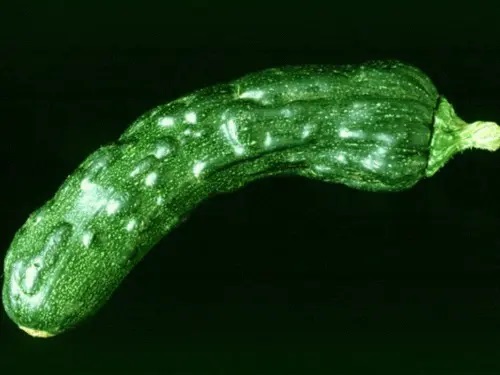
Early Detection of Mosaic Virus and Control Through Fertilization
Regular plant inspections and health assessments allow for quick problem identification and control. Early detection enables prompt preventive and remedial actions, halting disease spread. Combine this with soil amendments to address deficiencies swiftly.
Other Methods for Controlling Mosaic Virus Disease
Mosaic virus lacks a quick, specific treatment. Therefore, prioritize prevention and control to limit its impact on fields. Key tips include:
- Avoid planting virus-sensitive crops in soil where previous crops were infected.
- Since mosaic virus in plants like cucumbers can spread via contaminated seeds, buy from reputable sources to ensure seed health and quality. Soak seeds in a 10% bleach solution before planting to kill surface viruses.
- Some plant varieties are more resistant to specific viruses and pests. If your field is at high risk, plant mosaic-resistant varieties. For cucumbers, many CMV-resistant hybrids are available on the market.
- Eliminate weeds to minimize disease spread opportunities.
- Viruses can transfer via workers or tools. If workers’ clothing is dirty or tools were used in infected fields, the virus moves from unhealthy to healthy areas. Maintain hygiene for personnel and equipment. Sterilize pruning tools before use. Avoid working in wet conditions, as viruses spread easily then.
- Insect control reduces virus transmission. Use insect nets and pesticides effectively. Wash leaves to remove mites and insects; repeat 3-5 times every 7-10 days. For rising pest levels, employ miticides like Orthene or Bravo. Organic options include neem oil or introducing beneficial insects like ladybugs to prey on aphids.
- If a plant is infected, uproot it and destroy it far from the field to prevent spread. In advanced cases, removing diseased plants is necessary, as no cure exists for infected ones. Reflective mulches can repel aphids, delaying infections.
Additional strategies include crop rotation, using certified virus-free stock, and implementing integrated pest management (IPM). In greenhouses, sanitize benches and remove weeds underneath. Emerging techniques like RNA-based agents offer promise for targeting viruses like CMV without harming plants. For wheat streak mosaic, avoid planting near immature grains to prevent mite vectors.
Summary
Mosaic virus isn’t curable definitively, but proper nutrition management can lessen its severity and preserve crop performance. By supplying appropriate nutrients and using effective nutrition strategies, you can improve plant health and lower infection risks.
Implementing a balanced nutrition program, alongside other management practices (like vector control and resistant cultivars), is the optimal approach to minimizing this disease’s damage. Sustainable farming integrates these methods, reducing reliance on chemicals while boosting yields. With vigilant monitoring and science-backed nutrition, farmers can safeguard their crops against mosaic viruses for healthier, more productive harvests.